Kuinka kirjautua sisään järjestelmänvalvojana Windows 11:ssä tai Windows 10:ssä

Windows 11 ja 10 tarjoavat käyttöliittymiä ja komentoja, joiden avulla voit hallita järjestelmänvalvojatilin käyttöoikeuksia tehokkaasti.
Windows on kattava käyttöjärjestelmä, jonka avulla voit sanella ja hallita käyttöoikeuksia tällä hetkellä aktiivisen tilin perusteella. Tämä helpottaa järjestelmänvalvojien organisaation tietokoneiden hallintaa, koska he voivat tarjota valituille henkilöille korotettuja käyttöoikeuksia.
Mutta entä jos omistat tietokoneesi? Kuinka hallitset paikallisia tilejä? Entä jos sinulla ei ole järjestelmänvalvojan tiliä? Oletko suljettu ikuisesti? Jos sinulla on ollut näitä kysymyksiä tai jos olet äskettäin kohdannut virheen, jossa vaadit järjestelmänvalvojan lupaa, meillä on täydellinen opas sinulle.
Järjestelmänvalvojan tili on Microsoft Windowsin ylin tili, jolla on korkeimmat oikeudet. Voit järjestelmänvalvojana hallita tietokonettasi haluamallasi tavalla, tehdä muutoksia järjestelmätiedostoihin, asentaa ohjelmia, muokata Windows-asennusta ja paljon muuta. Oletuksena vakio- tai vieraskäyttäjillä ei ole lupaa tehdä tällaisia tehtäviä.
Järjestelmänvalvojan tili on välttämätön, jos haluat tehdä järjestelmätason muutoksia, kuten:
| Toiminta | Kuvaus |
|---|---|
| Muokkaukset järjestelmätasolla | Voit muuttaa ja hallita järjestelmätiedostoja. |
| Ohjelman asennus | Voit asentaa ohjelmia, jotka vaativat järjestelmänvalvojan oikeuksia. |
| Ohjainten hallinta | Voit muokata tai asentaa laiteohjaimia, mikä on oleellista järjestelmän toimivuudelle. |
Windowsissa on oletuksena sisäänrakennettu järjestelmänvalvojatili, vaikka se ei olisikaan näkyvissä lukitusnäytölläsi. Tämä tili luodaan Windowsin asennuksen yhteydessä hyväksymään kaikki järjestelmämuutokset.
Oletusjärjestelmänvalvojan tili on erillinen, kun taas käyttäjätili voi saada järjestelmänvalvojan oikeudet. Kun käyttäjätili korotetaan, se pääsee tekemään hallinnollisia toimintoja.
Voit kirjautua sisään käyttämällä riippuen tilanteestasi jompaa kumpaa menetelmää:
Oletusjärjestelmänvalvojatili on otettava käyttöön, jotta voit tehdä tarvittavat muutokset. Voit tehdä sen useilla tavoilla, joko CMD:n tai hallintatyökalujen avulla.
Käynnistä CMD järjestelmässäsi ja kirjoita seuraava komento:
net user administrator /active:yes
Käynnistä Suorita-valintaikkuna ja kirjoita komento:
lusrmgr.mscValitse Käyttäjät, napsauta Järjestelmänvalvoja ja avaa ominaisuudet muuttaaksesi tilin asetuksia.
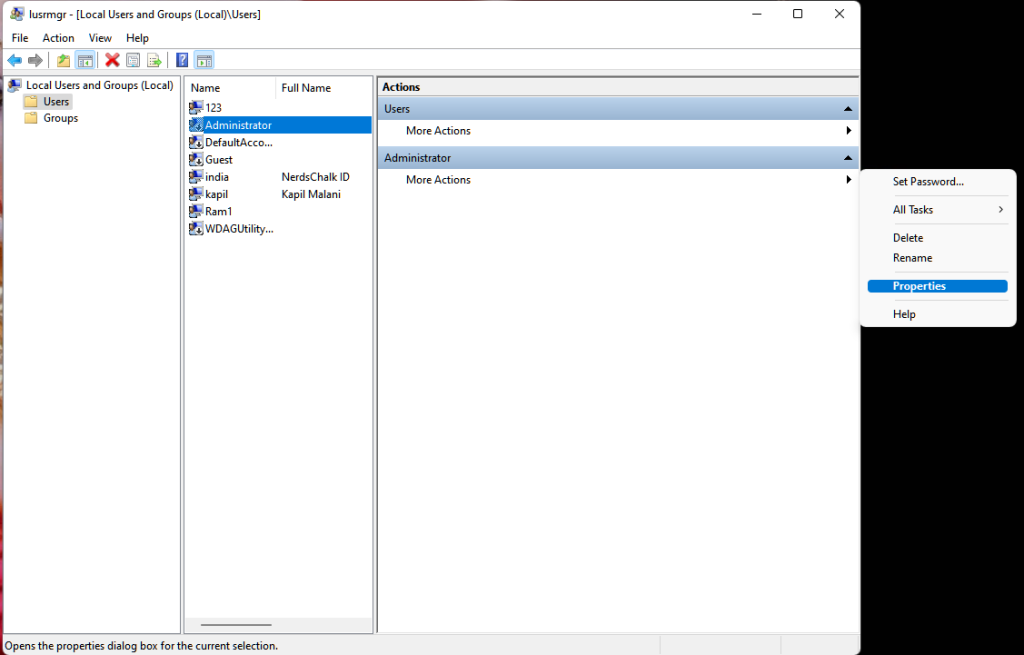
Paina Windows + R ja syötä komento regedit muokataksesi rekisteriä.
Jos käytät ryhmäkäytäntöeditoria, seuraa ohjeita otaksesi oletusjärjestelmänvalvojan tili käyttöön osoitteessa: gpedit.msc.
Kun olet suorittanut tarvittavat tehtävät, on suositeltavaa poistaa tili käytöstä.
net user administrator /active:noTämä osio käsittää CMD:n käynnistämisen lukitusnäytöltä, usein tarvitaan palautusympäristö.
Kun olet kirjautunut järjestelmänvalvojatilille, voit nollata paikallisen tilin salasanan Hallintapaneelin kautta.
Paina Windows + i ja valitse Tilillä oikeasta sivupalkista, ja sitten Perhe ja muut käyttäjät.
Käytä seuraavia ohjeita käyttäjätilin vaihtamiseen järjestelmänvalvojan tiliksi.
Kyllä, voit nollata salasanasi helposti, ja se voidaan tehdä useilla tavoilla.
Voit käyttää Hallintapaneelia tai CMD:tä käyttäjätilisi salasanan nollaamiseen.
Suosittelemme lisäämään salasanaa oletustilillesi suojaustarkoituksiin.
Ei, on suositeltavaa poistaa oletusjärjestelmänvalvojan tili käytöstä turvallisuussyistä.
Liittyvät:On monia syitä, miksi kannettava tietokoneesi ei voi muodostaa yhteyttä WiFi-verkkoon, ja siksi on monia tapoja korjata virhe. Jos kannettava tietokoneesi ei voi muodostaa yhteyttä WiFi-verkkoon, voit kokeilla seuraavia tapoja korjata ongelma.
Kun käyttäjät ovat luoneet USB-käynnistyksen Windowsin asentamista varten, heidän tulisi tarkistaa USB-käynnistyksen suorituskyky nähdäkseen, onnistuiko sen luominen.
Useat ilmaiset työkalut voivat ennustaa levyn vikoja ennen niiden tapahtumista, jolloin sinulla on aikaa varmuuskopioida tietosi ja vaihtaa levy ajoissa.
Oikeilla työkaluilla voit skannata järjestelmäsi ja poistaa vakoiluohjelmat, mainosohjelmat ja muut haittaohjelmat, jotka saattavat väijyä järjestelmässäsi.
Kun tietokone, mobiililaite tai tulostin yrittää muodostaa yhteyden Microsoft Windows -tietokoneeseen verkon kautta, esimerkiksi virheilmoitus verkkopolkua ei löytynyt — Virhe 0x80070035 saattaa tulla näkyviin.
Sininen kuolemanruutu (BSOD) on yleinen eikä uusi Windows-virhe, joka ilmenee, kun tietokoneessa on jokin vakava järjestelmävirhe.
Sen sijaan, että suorittaisimme manuaalisia ja suoria käyttötoimintoja Windowsissa, voimme korvata ne käytettävissä olevilla CMD-komennoilla nopeamman käytön saavuttamiseksi.
Käytettyään lukemattomia tunteja yliopiston kannettavaa tietokonetta ja pöytäkoneen kaiuttimia monet huomaavat, että muutamalla nerokkaalla päivityksellä ahtaat asuntolatilat voivat muuttaa täydelliseksi striimauskeskukseksi ilman, että pankkitili tyhjenee.
Internet Explorer poistetaan Windows 11:stä. Tässä artikkelissa WebTech360 opastaa sinua Internet Explorerin käytössä Windows 11:ssä.
Kannettavan kosketuslevy ei ole tarkoitettu vain osoittamiseen, klikkaamiseen ja zoomaamiseen. Suorakulmainen pinta tukee myös eleitä, joiden avulla voit vaihtaa sovellusten välillä, hallita mediatoistoa, hallita tiedostoja ja jopa tarkastella ilmoituksia.
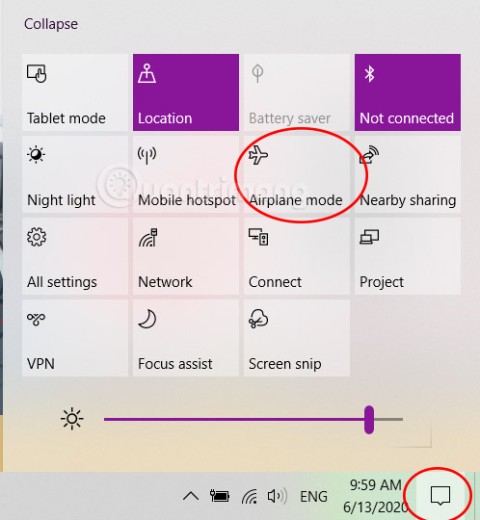
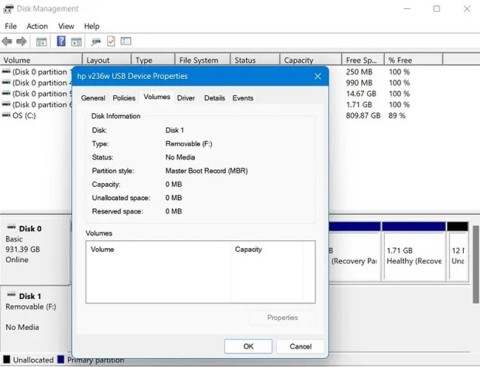
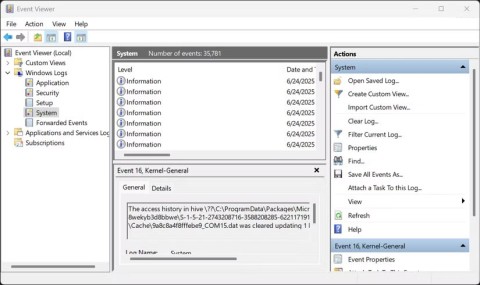
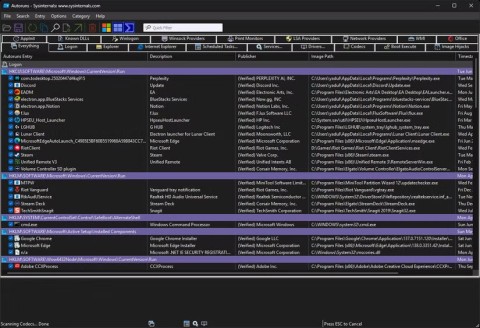
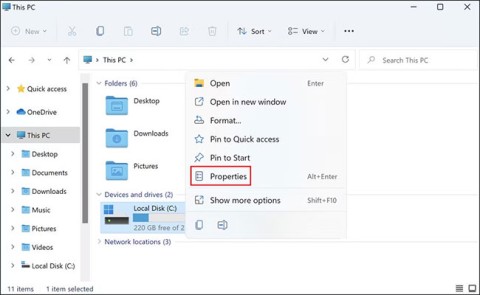

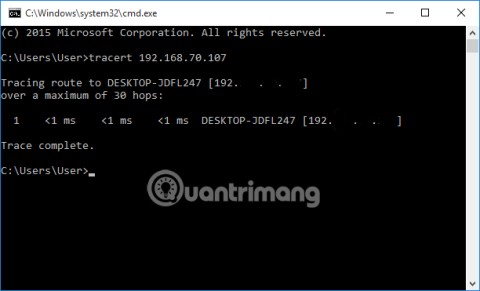
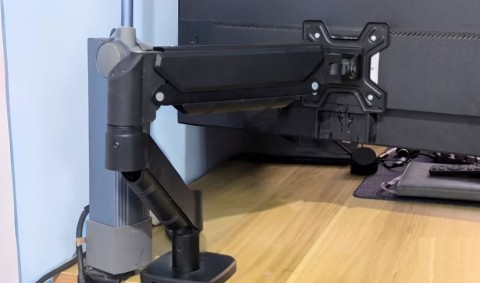
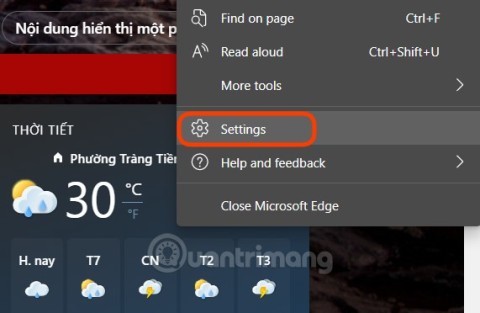
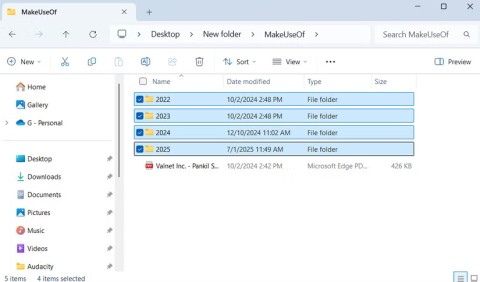
Kalle -
Aivan mahtavaa, kiitos! Kokeilin heti ja toimi täydellisesti!
Markku -
Tää oli tosi hyödyllistä, kiitos! Kiva että on vielä ihmisiä, jotka jakaa tietoa.
Mari -
Hienoa, jos eksyy, kannattaa vaan katsoa tämä ohje. Eikä tarvii huolehtia turhaan!
Riku -
Tosi hieno ja ymmärrettävä kirjoitus. Mulla oli ongelmia, mutta nyt olen järjestelmänvalvoja!
Liisa -
Annan tähden välittömästi! Näistä ohjeista oli iso apu, kiitos!
Eeva -
Olisin kaivannut enemmän tietoa siitä, kuinka palauttaa järjestelmänvalvojan tili, jos se on kadonnut. Voiko joku auttaa?
Oskari -
Vau, en tiennyt että kirjautuminen järjestelmänvalvojana voi olla näin helppoa! Kiitos!
Hennala -
Onko joku huomannut, että Windows 11:ssä tämä prosessi on toisenlainen? Olisi kiva kuulla muiden kokemuksia.
Jere -
Olen varma, että moni on pulassa ilman tätä ohjetta. Kiitos todella paljon!
Mikko -
Onks tää oikeest niiku totta? Mulla on aina ollu vaikeuksia löytää tää vaihtoehto.
Kaisa -
Miksi jotkut ohjeet on näin monimutkaisia? Tämä oli kuitenkin todella selkeä. Kiitos!
Jussi -
Teksti oli selkeä ja helppo ymmärtää. Ehdottomasti jakaa ystäville!
Laura -
Kiitos, tämä todella auttoi. Olin jo luovuttamassa, mutta nyt pääsin eteenpäin!
Anna-Maija -
Jaa, tää oli hyvä ohje. Älysin, että mun tilin pitäisi olla järjestelmänvalvoja, mutta en osannut muuttaa sitä. Nyt tiedän!
Salla -
Parasta tässä oli ohjeiden selkeys. Hyvin kirjoitettu! Kiitos!
Janne -
Kiitos paljon tästä ohjeesta! Olen yrittänyt kirjautua järjestelmänvalvojana, mutta en ole onnistunut. Nyt onnistui!
Veera -
Oon niin iloinen, että löysin tän ohjeen. Olin melkein luovuttaa!
Aino -
Hyvä, että on ihmisiä, jotka jakaa tällaisia vinkkejä. Tämä auttaa todella monia!
Erkki -
Jos en pysty kirjautumaan, voiko joku näyttää, miten tämä tehdään videoformaattina? Olisi super!
Petri -
Hyvä vinkki! Muistakaa aina, että järjestelmänvalvojan oikeuksilla toimii paljon tehokkaammin.
Tuula -
Jos olet unohtanut salasanasi, niin miten pääset kirjautumaan sisään? Oon totaalisen jumissa.
Tapio -
Onko teillä vinkkejä siihen, miten turvata tili oikein? Mulla on ollut huolena hakkerointi.
Tiina -
Miten jos on käytössä perhesuoja? Voiko silti kirjautua järjestelmänvalvojana? Ois kiva jos joku tietäis.
Sari -
Huh, onko tämä oikeasti näin helppoa? Kiitos avusta!
Hanna -
Olen koittanut kirjautua sisään Admin-käyttäjänä, mutta siinä ei näytä olevan vaihtoehtoa. Onko teillä ideoita?
Miika -
Olisin voinut todella käyttää tätä ennen, kun yritin kirjautua Admin-käyttäjänä.
Niina -
Voisitteko tehdä ohjeen myös Windows 8:lle? Tämä oli todella kätevä.
Petra123 -
Piti kokeilla heti! Tuli onnistumisen tunne, kun se onnistui!
Kaija -
Kannattaako käyttää tätä ohjetta, jos tili on luotu muussa maassa?
Heidi -
Olisiko mahdollista saada myös video-ohjeita? Ne auttais varmasti monia muita!
Antti -
Hienoa työtä! Jaoin tämän heti kaikille ystäville.